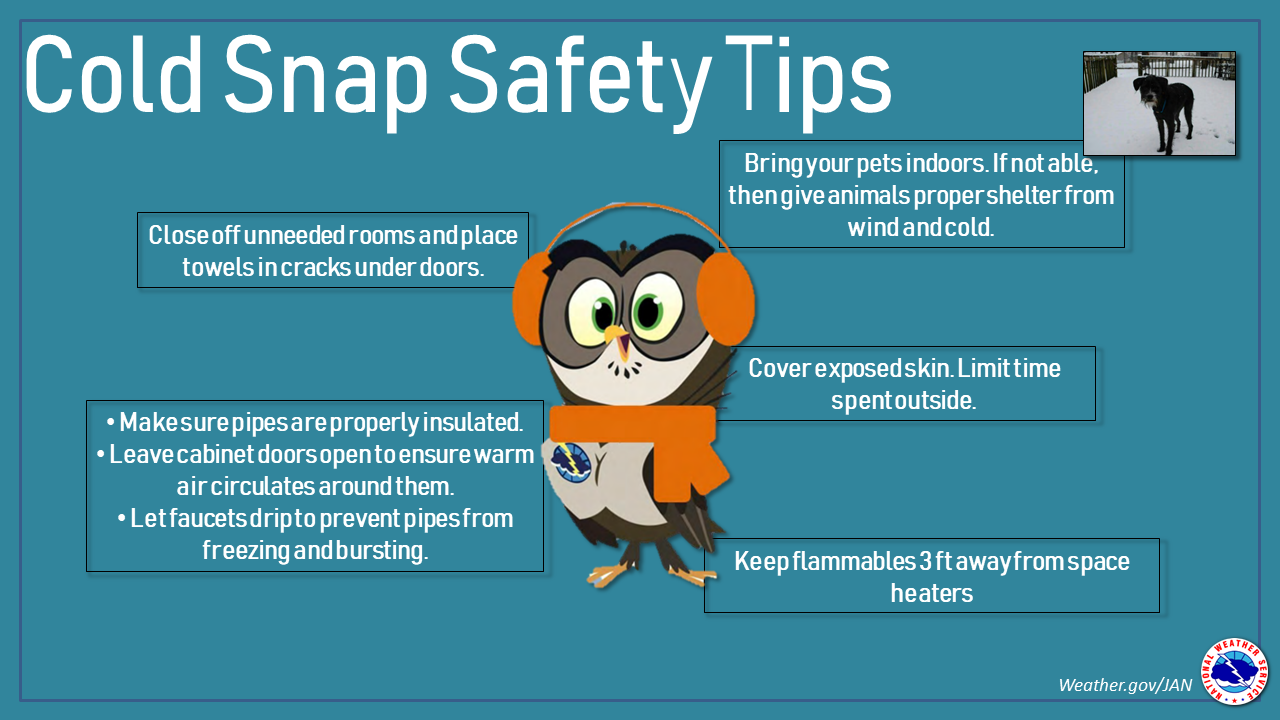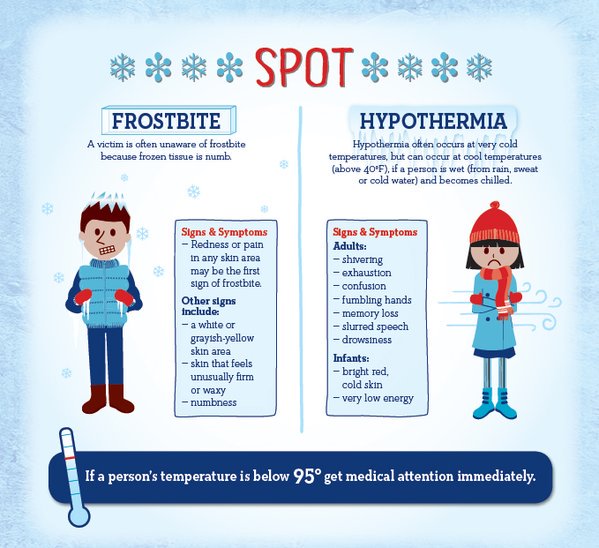 |
What is Extreme Cold?Back to homepage
Extreme cold is defined differently depending on where in the country you are. Temperatures routinely dip well below freezing, and even below zero, during the winter across many northern states. In the South, extreme cold usually is synonymous with a hard freeze. A hard freeze is generally when the temperature goes below freezing, and often below the upper 20s, and does not rise above freezing for a number of hours. This type of freeze is dangerous for pipes as they can easily burst if not properly insulated. Such an event occurred in early January 2010 in central Mississippi.
A prolonged cold snap, caused by a couple of strong arctic air masses, affected the region during the first two weeks of January. This resulted in some record temperatures across the region. Daily highs during that period were in the 20s, 30s and 40s with lows in the teens and 20s. The first ten days of 2010 were the coldest first ten days of any year on record with an average temperature of around 29 degrees, which is around 14 to 16 degrees below normal. This outbreak will not be remembered for any bitterly cold temperatures, it will be remembered for the prolonged period of cold conditions and spans of time below freezing. Due to the duration of the cold, a great deal of damage occurred to the water line infrastructure around the region. The issues from the hard freeze were as follows: water line breaks, and frozen water pipes to homes, especially rural homes; wells freezing up; and water valves being stuck. Due to all the water line breaks, flooding of buildings and homes occurred. By far, the hardest hit area due to broken water lines and overall impact, was the Jackson Metro. The city had to be shut down for 3 to 5 days due to no water pressure. Substantial economic losses occurred due to the downtime of municipalities across the Metro. Other large cities across the forecast area were also substantially impacted by busted water lines and little to no water pressure. This event also caused 3 fatalities due to hypothermia. One occurred in Hinds County and two in Lauderdale County.Temperatures remained so cold that even the Ross Barnett Reservoir froze, which had not occurred since December 1989.
A significant cold snap also occurred in mid-January 2017. Arctic fronts plowed through the state, and winter precipitation also occurred across the region. However, following the precipitation, temperatures dropped well into the teens and even some single digits across portions of the state. This caused major issues around the Jackson metro area where pipes burst and caused boil water issues for many days to over a week.
What is Wind Chill?
Wind chill is not the actual temperature but rather how wind and cold feel on exposed skin. As the wind increases, heat is carried away from the body at an accelerated rate, driving down the body temperature. The term "Apparent Temperature" is sometimes used in conjunction with a wind chill temperature. Animals are also affected by wind chill; however, cars, plants and other objects are not. The chart below is an easy way to figure out the wind chill if the wind speed and air temperature are known. Once the body is exposed to certain wind chills, it will succumb to frostbite after a determined length of time. The colder and windier it is, the quicker the body will develop frostbite.
Cold Weather Dangers
Frostbite
Frostbite is damage to body tissue caused by extreme cold. A wind chill of -20°F will cause frostbite in just 30 minutes. Frostbite causes a loss of feeling and a white or pale appearance in extremities, such as fingers, toes, ear lobes or the tip of the nose. If symptoms are detected, get medical help immediately! If you must wait for help, slowly rewarm affected areas. However, if the person is also showing signs of hypothermia, warm the body core before the extremities.
Hypothermia
Hypothermia is a condition brought on when the body temperature drops to less than 95°F. It can be fatal. For those who survive, there are likely to be lasting kidney, liver and pancreas problems. Warning signs include:
Take the person’s temperature. If below 95°F, seek medical care immediately! If medical help is not available, warm the person slowly, starting with the body core. Warming the arms and legs first drives cold blood toward the heart and can lead to heart failure. If necessary, use your body heat to help. Get the person into dry clothing and wrap in a warm blanket covering the head and neck. Do not give the person alcohol,drugs, coffee or any hot beverage or food. Warm broth is the first food to offer.
The effects of cold weather can vary from the coast to northern Mississippi, and because Mississippi is covered by 4 different National Weather Service offices, there may be some confusion as to what criteria is used for a wind chill and hard freeze products. Here are links to winter weather watch, warnings and statement criteria from Memphis, Jackson, and New Orleans. For much more information on cold weather safety and hazards, click here.
Cold Weather Safety Tips
Click for larger images.
 |
 |
 |
 |
 |
 |
 |
 |
 |
 |
 |
 |